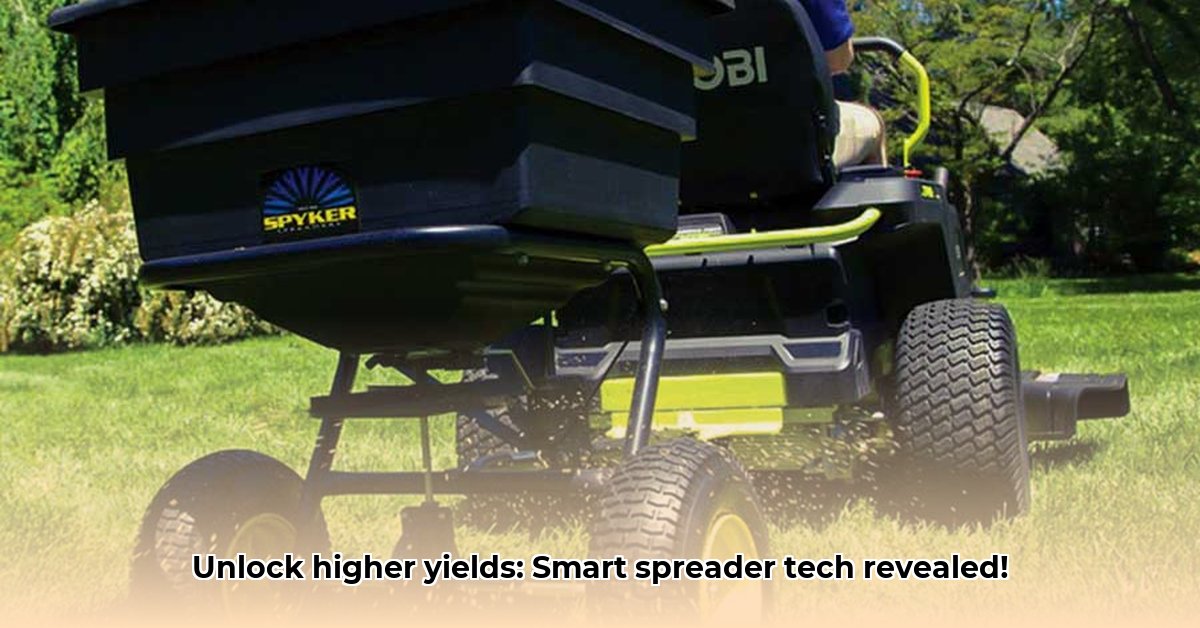
Fertilizer Spreader Lawn Tractors: Optimizing Fertilizer Application for Enhanced Yields and Sustainability
Precise fertilizer application is crucial for maximizing crop yields and minimizing environmental impact. Fertilizer spreader lawn tractors offer a significant advancement in efficiency and accuracy compared to traditional methods. This report details the benefits of this technology, guides you through the selection process, and highlights sustainable practices to optimize your fertilization strategy. For more information on selecting the right spreader, check out this helpful resource: Learn More.
Why Precision Fertilizing Matters: Maximizing Returns, Minimizing Waste
Uneven fertilizer distribution leads to wasted product, reduced crop yields, and potential environmental damage due to runoff. Fertilizer spreaders mounted on lawn tractors provide targeted application, ensuring nutrients reach where they're needed most. This translates to healthier plants, increased yields, and a better return on investment. Think of it as the difference between using a watering can versus a sophisticated irrigation system – more control, better results. How much more efficient would your fertilizer use be with pinpoint accuracy?
Selecting the Right Fertilizer Spreader: Key Considerations for Optimal Performance
Choosing a fertilizer spreader involves careful consideration of several factors to ensure compatibility with your operation's scale and specific needs.
Spreading Mechanism: Rotary spreaders cover wider areas, ideal for large fields, while spinner spreaders offer more precision for smaller areas or targeted applications.
Hopper Capacity: Larger hoppers reduce refilling time, increasing efficiency for large-scale operations. Smaller hoppers are more manageable for smaller properties.
Calibration System: Intuitive and accurate calibration is essential for consistent application rates. Select a spreader with a simple, reliable system to avoid uneven distribution.
Smart Features: GPS-guided spreading and variable rate technology (VRT) offer enhanced precision and efficiency, especially on uneven terrain or for variable soil conditions. VRT adjusts application rates based on real-time soil analysis, maximizing nutrient uptake while minimizing waste. While these features add cost, the potential return on investment through improved yields can be substantial.
Leveraging Smart Technology for Enhanced Precision and Environmental Responsibility
Modern fertilizer spreaders often incorporate GPS guidance to maintain even distribution, even on uneven terrain. Variable rate technology (VRT) represents a significant advancement by adjusting the fertilizer amount based on soil conditions and crop needs, reducing fertilizer overuse and environmental impact. By implementing VRT, farmers can optimize nutrient use, reduce the risk of nutrient runoff, and contribute to more sustainable agricultural practices. Does your current application method match this level of sophisticated control?
Embracing Sustainability: Minimizing Environmental Impact Through Precision
Sustainable agriculture emphasizes resource conservation and environmental protection. Precise fertilizer application, enabled by smart spreaders, plays a vital role. Minimizing fertilizer waste reduces runoff pollution. Targeted application also lowers the environmental footprint of fertilizer production and transportation. Efficient fertilizer utilization is not merely a cost-saving measure; it is a cornerstone of environmentally responsible farming. How is your current approach to fertilization impacting your local ecosystem?
Example Spreader Comparison: A Snapshot of Available Options
| Feature | Model X | Model Y |
|---|---|---|
| Hopper Capacity (lbs) | 50 | 100 |
| Spreading Width (ft) | 10 | 12 |
| GPS Integration | No | Yes |
| Variable Rate Technology | No | Yes |
| Approximate Price ($) | $1,500 | $2,800 |
Note: Specifications and pricing are subject to change. Consult manufacturers for the most up-to-date information.
A Holistic Approach: Integrating Precision Technology with Best Management Practices
While advanced technology offers significant improvements, it’s crucial to remember that a fertilizer spreader is just one component of a successful fertilization strategy. Regular soil testing remains essential to determine nutrient levels and optimize application rates. Integrating best management practices like crop rotation and cover cropping further enhances soil health and minimizes reliance on chemical inputs. A comprehensive system combining technology and best management practices represents the most effective approach to sustainable agriculture. What other sustainable farming practices might complement your use of a fertilizer spreader?
The Bottom Line: Investing in Efficiency, Sustainability, and Long-Term Success
Investing in a high-quality fertilizer spreader represents an investment in long-term productivity, profitability, and environmental stewardship. By carefully evaluating spreader features and integrating it into a broader strategy, farmers can significantly increase yields while minimizing waste and protecting the environment. The benefits extend beyond immediate cost savings – it's about farming smarter, not harder, for a sustainable future. How can you integrate this advanced technology into your overall farm plan?